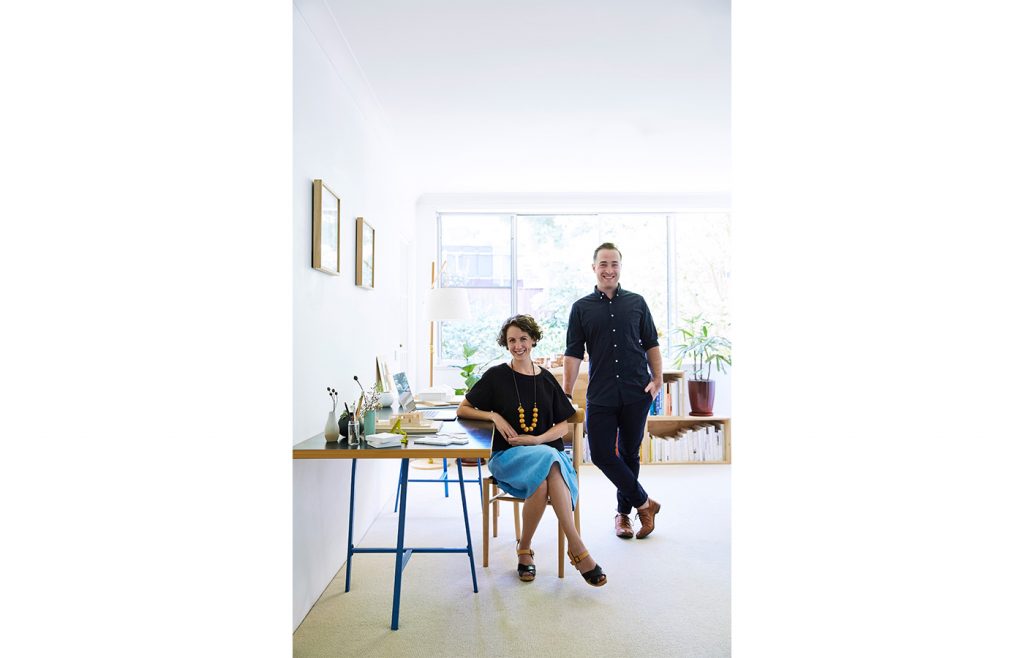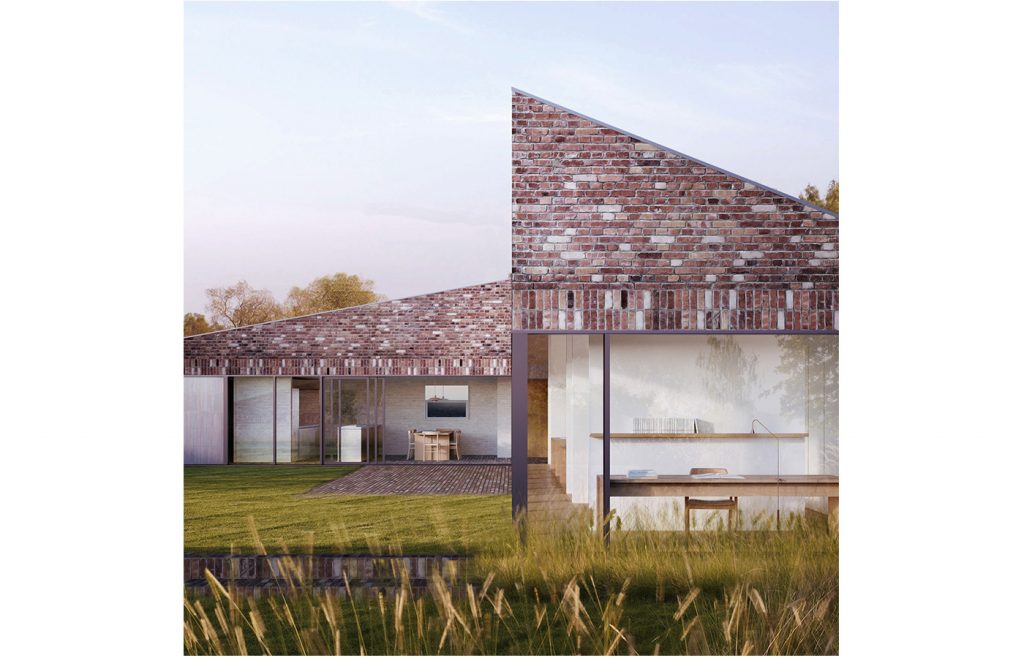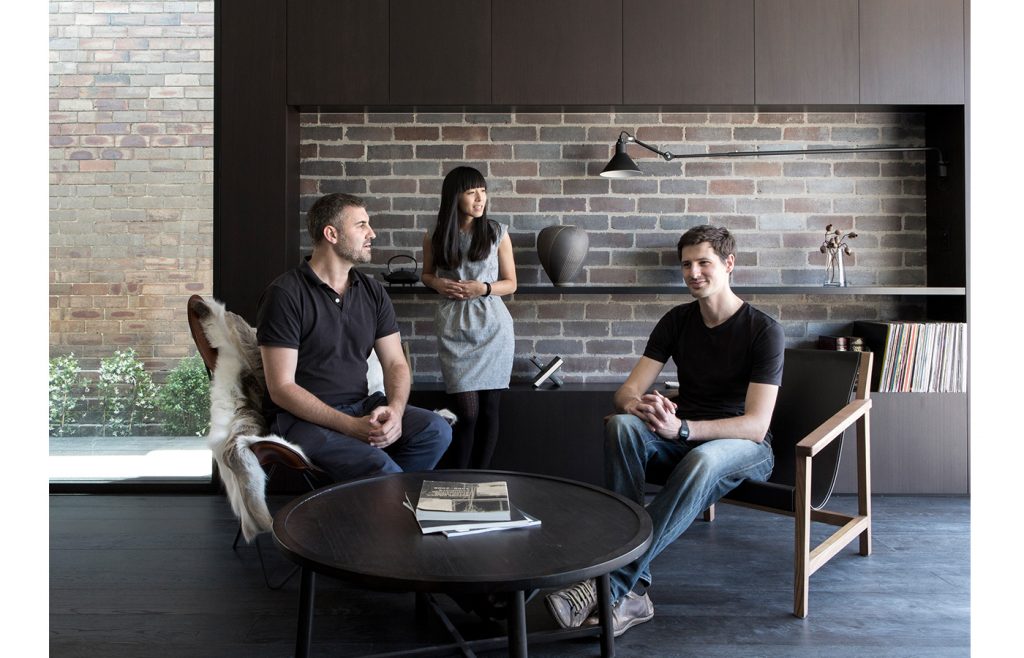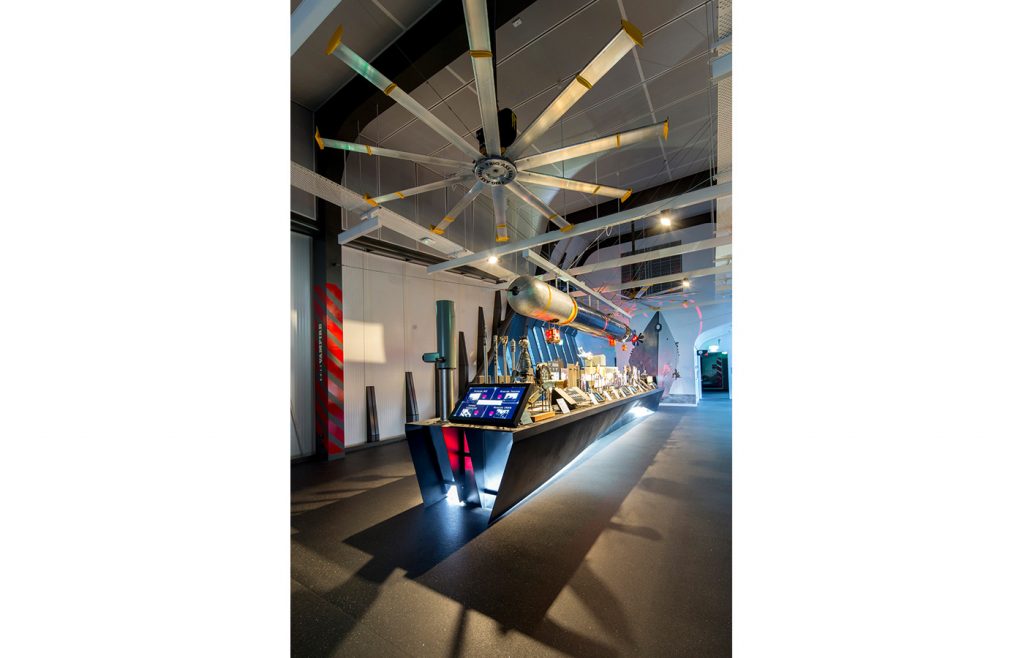



table of contents

previous articles

next articles
Feature article



CONTENTS
TRIAS
.
TRIAS is a newly formed design practice made up of two – Jennifer McMaster and Jonathon Donnelly. From the Vitruvian triad of firmness, commodity and delight, they have loosely developed a manifesto of solidity, simplicity and beauty as aspirations in their work; creating a sustainable practice model that encourages good work without losing sight of the joy of it all
.
studioplusthree
.
studioplusthree is a multi-disciplinary design studio founded by Simon Rochowski, Julin Ang and Joseph Byrne in 2014. With a strong belief in the role of craft, collaboration and curiosity, their resulting projects across exhibition, installation and architectural design are bespoke and unconventional. They aim to create work that has a richness in both thinking and making
.
How do you practice within the field of architecture?
TRIAS: Architectural work is the core of our practice; everything else complements and enriches this. In this way, our practice model is quite traditional. We maintain a lot of ancillary projects, which inform our work and bring in extra income: Jen writes and teaches; Jonathon experiments with furniture, material and product.
We accepted fairly early on that architecture is a vocation and that it is really hard to draw work/life boundaries in our field. This is exacerbated by the fact that we are a couple. As a consequence, we very much follow the adage that ‘how we spend our days is how we spend our lives.’ We accept that our work bleeds into our life, so we try and make both as enjoyable as possible. An example of this is travel – we travel a lot because it makes for great life experiences, but it also keeps us curious and inspired.
STUDIOPLUSTHREE: In our studio, we’re involved in a range of different kinds of project, but we work mainly across architecture, exhibition and installation design. We like to experiment with the boundaries of these disciplines though. This has led to collaborations with game designers, dancers, writers, weaponologists, theatre directors, archaeologists, sound designers, storytellers and many more. We’re constantly on the lookout for inspiration from unexpected quarters and collaborations are a great way to achieve this.
T: Ultimately, it is about creating a sustainable practice model that encourages good work without losing sight of the joy of it all.
How did you arrive at what you are doing now?
T: We had always dreamed of starting our own studio but in a distant, in-a-few years sort of way. Then one day we woke up and realised we actually had all of the conditions that we needed to make it happen. We had (just) enough work, (just) enough in savings and (just) enough experience. Most importantly, we recognised that we were at a point in our lives where we had time, very few overheads and a lot of passion and energy. The risks were actually surprisingly small.
SP3: We have had very different approaches to arrive at our current position, starting out in other disciplines like graphic design and theatre set design – and coming to architecture later on. Since then we’ve lived, studied and worked in a variety of different countries (our name comes from trying to find an appropriate time zone for skype meetings), and we aim to bring that diversity of experience to our current practice.
Can you define your principal architectural ambitions within that manner of practice?
T: Our ambition is simple: to do great, design-led work, to stay small and nimble, and to contribute to the betterment of our city and culture.
We also aspire to contribute to architectural culture and act as good advocates for the profession. We look forward to getting a larger studio space as we plan on hosting talks, doing workshops and organising lots of cool stuff. We also want to do our part in promoting an appreciation for Australian design overseas.
SP3: We believe in the idea of investment in the design process to create a meaningful outcome. Each project is an opportunity for exploration where we don’t necessarily have the answers or know the outcome at the beginning, but through the process of questioning and investigation, we try to arrive at a result that reflects the often complex context of the project. Ultimately we hope to create work that has a richness in both thinking and making.
Can you describe a particular project you have engaged with which has been developed in that ambition?
SP3: One of our recent projects, the Warships exhibition at the Australian National Maritime Museum, was developed with this thinking. We were commissioned to design the new permanent exhibition, which is centred around a set of bespoke steel tables.
The brief was quite open in the sense that the main requirement was for future flexibility – the project sat between exhibition, furniture, industrial, product and architectural design. Although it was challenging to generate one design that met all the criteria, we felt it was well suited to our multidisciplinary background.
How do you see those ambitions in relation to the wider practice of architecture?
T: We see a lot of our ambitions as tying into general movements that are happening across the globe. The shift towards housing alternatives, for example, is a global question. All around the world, people are investigating how we can make our cities more affordable, more equitable, more sustainable and better for their citizens. We definitely want to tie into that same debate and think about how architecture can improve our collective culture.
SP3: Bringing alternative approaches to traditional modes of practice has roots in many areas, as seen in the rise of the sharing economy. In the context of housing in particular, there are an increasing number of people for whom the standard options are no longer attainable or desirable. In an urban context, the current predominant model of procurement doesn’t necessarily fit with how many people want to live.
There is a clear role for a professional with an understanding of how to integrate social, economic and design issues to provide alternative solutions. This can only be achieved by thinking differently and working together in a process of collaboration to achieve a quality outcome.
Do you see these ambitions as reconciling a current deficit in the practice of architecture?
SP3: Australia has its own particular set of challenges around the context and culture of design. One of the longer term trends of the free-market society is a move towards standardisation and lower-cost mass production, usually at the expense of quality. However, over the last few years this has begun to be challenged with a move towards more localised, small-scale production in a variety of industries.
Particularly in the more instantaneous age of social media, the focus can be too much on the end result or surface appearance. Through the process of exploration and collaboration that we follow, we try to ensure that there is an authentic progression of concept through to completion, which is only possible when enough time is given to maintain the quality and richness of the project along the way.
What are your thoughts on the future of architectural practice?
SP3: We would like to see a future that is more diverse, both in terms of what’s being produced and the people producing it. We would like to imagine that there are more types and more options available to people and that the built environment continues to be a vibrant place that people feel at home in.
We feel that the significant value that the architectural process can bring is currently challenged by market forces, precipitating the need for alternative models not just of design, but of procurement in general. Both the public and government can play a role in this, but it’s up to us as practitioners to promote, provoke and propose these alternatives in order to stay relevant.
T: From the perspective of our practice, we’d love to be grounded in our city, but work in and be connected to the world at large. We want to work between the local and the global, producing architecture in places beyond Australia. We are fascinated by cultural interactions and believe that Australian design has a unique perspective that could enrich so many other places.
As we grow, we’re keeping one eye on opportunities here and another on opportunities elsewhere. The goal is to have things happening in more than one place, in more than one way. We don’t want to be limited by our own expectations of what’s possible.















